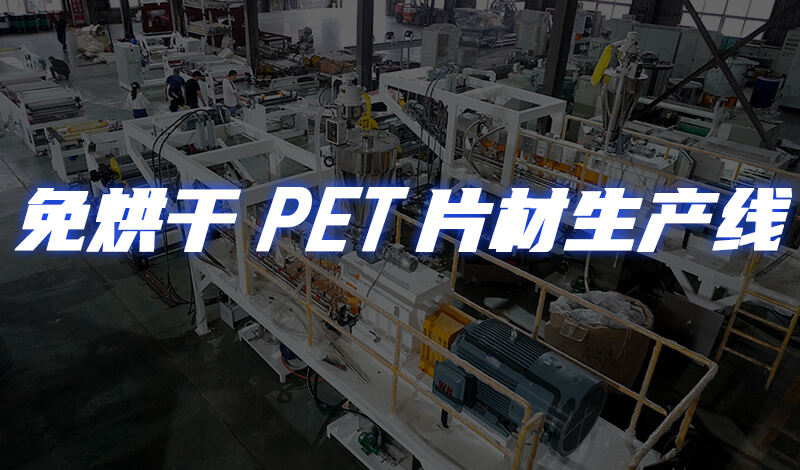PET sheet production line without drying

The workflow is introduced as follows:
Firstly, we pour the crushed PET bottle flakes into the screw feeder, and the raw material is transported to the extruder hopper by the screw feeder. Since the hopper is equipped with a level meter, it can ensure that there is always raw material in the hopper.
The material in the hopper is then dosed through the feeder into the barrel of the extruder, where it is melted and transported forward through the twin-screw extruder. Upon entering the first vacuum port, approximately 95% of the water in the feedstock is extracted. After passing through the second and third vacuum ports, the PET reaches a 100% water-free state, thus ensuring the viscosity of the PET and the quality of the PET.
Then the raw material passes through a screen changer to filter out the dust before entering the melt pump. After being extruded by the melt pump at constant pressure, it enters the mold. After passing through the mold, the sheet is formed and extruded.
After the sheet comes out of the mold, it enters the three-roll calender for cooling and pressing. The thickness of the sheet is adjusted by adjusting the gap between the two rolls. Qualified sheets are cut by an edge trimming device to ensure the width of the sheet.
Finally, the sheet is pushed forward on the rollers and enters the double-sided silicone oil coating machine. The surface of the sheet is evenly coated with silicone oil or anti-static liquid. Applying silicone oil ensures that the product can be easily separated from the mold during the thermoforming process. Applying anti-static liquid can effectively prevent the product from generating static electricity. Users can easily choose to use according to their needs. The sheet then enters an infrared oven for drying, then passes through a traction device and finally enters a constant tension winder.
Advantages
1. Parallel co-rotating twin-screw extruder, twin-screw one-step extrusion, truly drying-free. The extruder is able to produce high quality PET sheet at low temperatures and low speeds. the GS75 model has a main motor power of 132 kW and a production capacity of up to 400 kg/h. 2.
2. Super Vacuum System. The vacuum system is mainly used to remove water and volatile substances from PET. It is centrally controlled by advanced Siemens PLC and HMI. It ensures the stable operation of the machine under the condition of absolute vacuum less than 100Pa, which can reduce the viscosity of PET less than 0.03. Continuous multi-stage large-opening vacuum really eliminates wet drying and saves 40% of energy consumption.
3. large filtering area and non-stop screen changer. The screen changer's 1200 square centimeters of filtration area ensures that no residual waste is left in the final pellet, compared to 150 square centimeters for typical filters in the industry. At the same time, there is no need to stop the machine when changing the screen, which ensures the stable operation of the machine.
4. The rollers of the three-roll calender adopt spiral runner design, which can effectively ensure that the surface temperature accuracy of the rollers is within ±1°C. The rollers are made of high-quality steel. The rollers are made of high quality steel and the three rollers are driven by servo motors.
5. The whole production line is fully automatic and very easy to operate.

